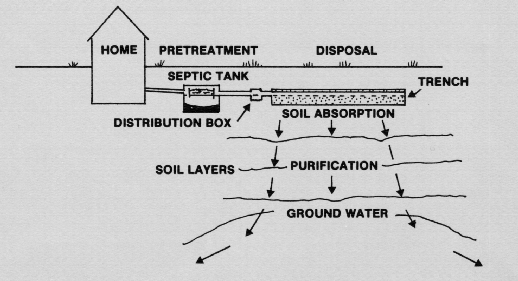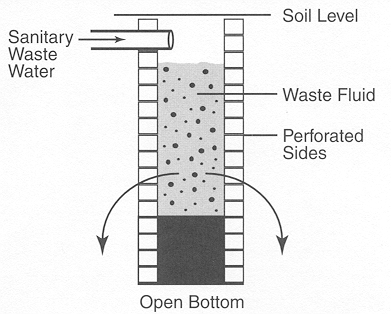SEPTIC SYSTEM
Most private sewage disposal system consists a septic tank
and an absorption area. The drains in
the home flow into the septic tank where the separation occurs. See the septic tank diagram below. The effluent flows into either the
distribution box (if available) or directly into the drainage field where the
effluent is absorbed into the soil.

The sewage enters the septic tank and break down separation
process. The sludges settles on the bottom of the tank and the scum floats on
the top layer. There should be minimal to
no sludge exiting into the drainage field.
The sludge will build up in the drainage field causing the leaching into
the soil to slow or not drain at all.
This is the reason it is important to pump out the sludge from the
septic tank.

Â
The drainage field is either the infiltrator chamber system,
leachlines with gravel, or seepage pits as shown below:

Leachlines:

Seepage Pits:

Design and installation of new construction, add or
replace existing septic system. We work directly
with local agencies to obtain approvals and permits so you don’t need to.
Maintenance and Repair of septic systems. We have a variety of tank sizes and vacuum
pump mounted trucks available for removal of sludge and non-hazardous waste
material. A hydrojetter is utilized to
break up sludge build up along the walls of pipes, tanks or pits. Repair pipes from the building to the septic
tank and throughout the system.
(photo of trucks, hydrojetting, and repair jobs)
Inspection and Certification is required for most
home sales transactions by the escrow company prior to closing. We provide a complete full inspection of the
existing septic system and disclose it in our discovery report. We will also forward a certification document
to the escrow company acknowledging that the system is working and has passed
inspection.
(insert inspection request form)